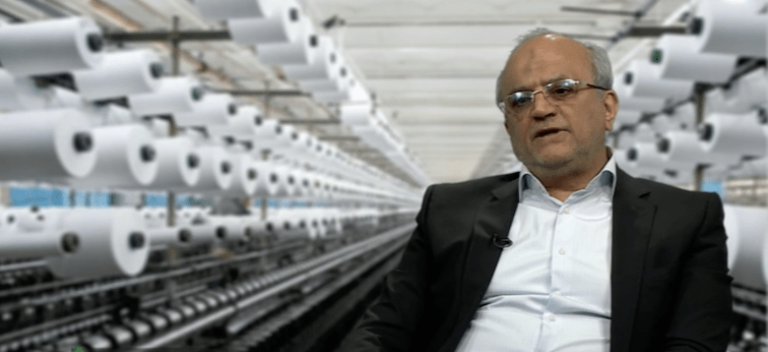The member of the board of directors of the textile industry association mentioned the dependence of production support on bank facilities, unprofessional investments and the lack of a clear strategy among the obstacles facing this industry.
According to the report of Nasaji Kohn magazine, quoted by Sedavasima news agency, the textile industry as one of the strategic industries of the country is facing many obstacles and problems, among them four serious obstacles, including non-expert investments, not having a clear strategy and plan, depending on production support. Banking facilities and consultation with unqualified people in this industry have caused serious challenges in the discussion of raw material supply and liquidity for textile industry activists.
While the population of about 86 million inside the country, the population of more than 400 million people in neighboring countries and the population of more than one and a half billion people in the countries of the Islamic world, it is considered a potential capacity in the market of textile and clothing industry, which requires policy and targeted planning. and the planners, policy makers and law makers have always emphasized on the use of this huge capacity in the development of the textile industry, but wrong and unprofessional policies rather than seeking to take over the consumption markets, have caused the loss of opportunities in Iran’s domestic market and foreign markets. The goal was to export.
Abbas Sarsharzadeh, a member of the board of directors of the textile industry association, told the reporter of the Sada Osima news agency: Non-expert investments are one of the obstacles that have been carried out over the last few years and decades regardless of the profitability and capacity of domestic raw materials in meeting the needs of this industry, which has caused many investments to be unprofitable.
Setting up 20 spinning units regardless of profitability within a year
He added: For example, in the spinning industry as a part of the textile industry chain, significant investments have been made in the last few years, and even a part of the foreign exchange reserve fund facility was allocated to this industry, and in the years 1998 to 1999, 20 large spinning units without Paying attention to its economic efficiency was launched; This is despite the fact that the production of cotton, which is the main raw material of this industry, has decreased in recent decades, and the production of this product has decreased from 250,000 tons in the past to 70,000 tons in 2020 and in 2019. It was 80 thousand tons.
Increasing the need to import natural fibers with non-expert investments
Sarsharzadeh continued: This type of investment, i.e. the increase in the raw material requirement of the spinning industry, considering the production of half of the cotton required by this industry in the country and the spinning industry’s need for about 160 thousand tons of cotton, we are forced to import natural fibers. In fact, with investment, we have increased the need for imports and have turned from cotton exporters to importers.
Less than 50% of the capacity of dyeing factories are active
Less than 50% of the capacity of dyeing factories are active The investments made in the dyeing industry, simply because of the low cost of production and without paying attention to the logic of profitability in it, have caused twice the domestic demand in this production industry and, because the chain after the weaving industry has not grown And on the other hand, the field of export is not available, currently most of the dyeing, printing and finishing factories are working with less than 50% capacity.
Dependence on the import of nylon needed by the textile industry
The head of the Association of Dyeing, Printing and Finishing of Textile Industries considered unreasonable support as one of the other problems that caused uneconomic investment in this industry, and an example of that is 2 nylon 6 production units, one in Khorram Abad and another in Tehran. and because they could not improve in terms of technology and the support policy for them was carried out in a piecemeal and unplanned manner and their profitability was lost, they were closed and we are dependent on imports for this product.
Increasing production problems with financial support policies in the form of facilities
The member of the board of directors of the textile association considered financing policies based on the provision of facilities as another problem of this industry and said: Another policy to support the industry is the payment of facilities, which not only does not solve the problem of financing production units, but also adds to production problems, and the reason for this is the payment of facilities with high bank interest and non-economic units, which causes it to increase and , because there is no ability to repay the debt for the company, a deferred debt is created.

